Struggling With Powerful Moves? Don’t Just Train Your Fingers.

In my experience as a climbing coach, many of my clients come to me thinking a lack of upper-body strength is holding them back. But after the initial assessment, it often turns out that their pulling strength is not the problem at all. Rather, the way they coordinate their hips with the rest of their body needs to be a larger focus of their program.
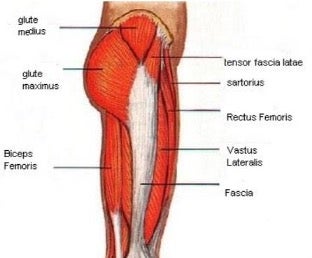
The purpose of the hip
The hip is a ball-and-socket joint where the leg attaches to our torso. It is a very mobile joint that allows for a large range of motion, including forward-backward, side-to-side, and rotational movements. Our hips support our body weight as part of everyday movements like walking, running, sitting, standing, going up/down stairs, etc. Because of this, the hip musculature is very robust, comprising the notably strong muscles of the glutes, quads, and hamstrings.
Why do we care about our hips while climbing?
For one, our hips are our center of gravity—they are where we generate movement and where gravity exerts its greatest influence. In a sport like climbing in which we are trying to defy gravity, being able to manipulate our center of mass is crucial. Secondly, as mentioned, our glutes are actually the biggest muscles in our body—they’re incredibly strong. It’s advantageous to be able to use and control these muscles for efficient and favorable movement. Lastly, our hips are part of a very powerful chain of muscles—one that runs all the way from our feet through our core. This chain is especially important for dynamic movement; it’s activated when we spring off our feet when deadpointing or dynoing. Because of this, the hips create a lot of momentum and power, which can reduce the workload required of our upper body.
“Hip-centric” climbing moves
Specific climbing moves that involve our hips include highsteps, rockovers, dynos, deadpoints, heel hooks, and toe hooks, to name a few. As a rule, because our hips are our center of gravity, we generally want to keep them close to the wall (exceptions on this later), often parallel to the surface of the rock. On the spectrum of the endless possible hip shapes we can get into while climbing, it’s useful to conceive of a different shape on either end: The first shape is open (aka square) hips, and the second is closed (aka turned) hips.
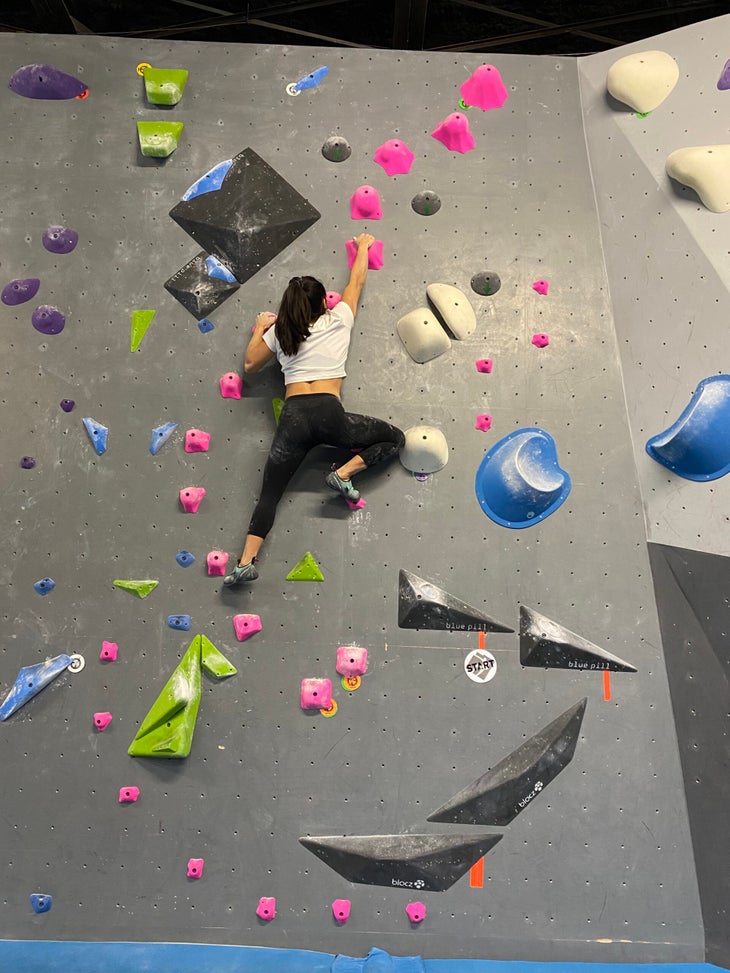 |
 |
The appropriate hip shape and the degree of exaggeration depend on the situation. Climbing is extremely variable, and things like wall angle, hold direction, movement direction, movement speed, etc. all affect which hip shape we employ. Most climbers naturally trend toward one end of the hip-shape spectrum or the other. However, because of the variability of our sport, it’s important to master both ends of the spectrum so that you’re prepared for any situation.
The hips and power
When it comes to power, the hips play a crucial role in both generating and directing momentum—the difference between sticking a hold and falling away from the wall too early often comes down to where the hips are in space. Think about this: Have you ever experienced a moment of weightlessness on a move—that split second when your momentum toward the hold stops but gravity has yet to take hold of your body? This moment is what we are trying to maximize when it comes to power. We want to create enough momentum so that we have time to grab the hold before we fall away from the wall.
Power can be described as a force expressed over a certain distance (also known as Work) in a certain amount of time. Because of this, there are two main ways to create more power. One is to generate more work—more specifically, because the distance to the next hold is a static factor in the equation, to perform more work, we must generate more force. The other way to create more power is to perform the work more quickly.
 |
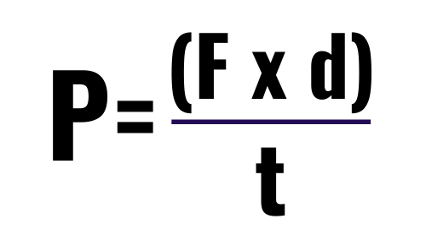 |
- P: power
- W: Work
- t: time
- F: force
- d: distance/displacement
Let’s look at power in terms of the deadpoint, a dynamic movement in which momentum is required to reach the next hold, but your feet stay on the wall (vs. a dyno, in which your feet leave the wall).
Here’s how to incorporate the hips skillfully into your deadpoint. Note that these actions need to happen in sequence.
| 1. Create space by sagging the hips away from the wall opposite your direction of travel to the target hold: So, if your next hold is up and to the right, sag down and to the left as a countermovement. The space between your hips and the wall allows you room to create force. |
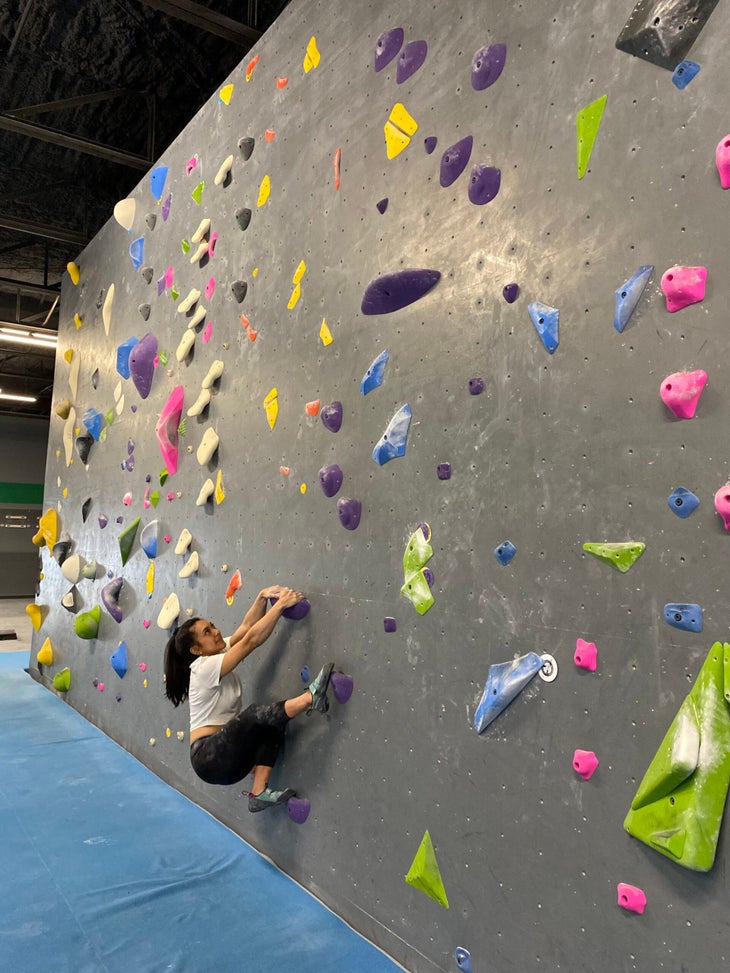 |
| 2. As you launch into the deadpoint from the bottom of your sag, create maximal force by pushing with the legs and extending the hips back into the wall, in the desired direction of travel. |
 |
| 3. Once you generate momentum, the arms can then take advantage of the force created and continue the movement, pulling after the hips start to extend |
 |
| 4. Snap for the hold quickly—the quicker you can perform the hip extension and strike for the grip like a cobra, the more power you create. A phrase I like to remember is “Snappy hips are happy hips.” If you’re not quite getting to the hold and you feel like you’re doing everything right, try to do the movement just a little faster. |
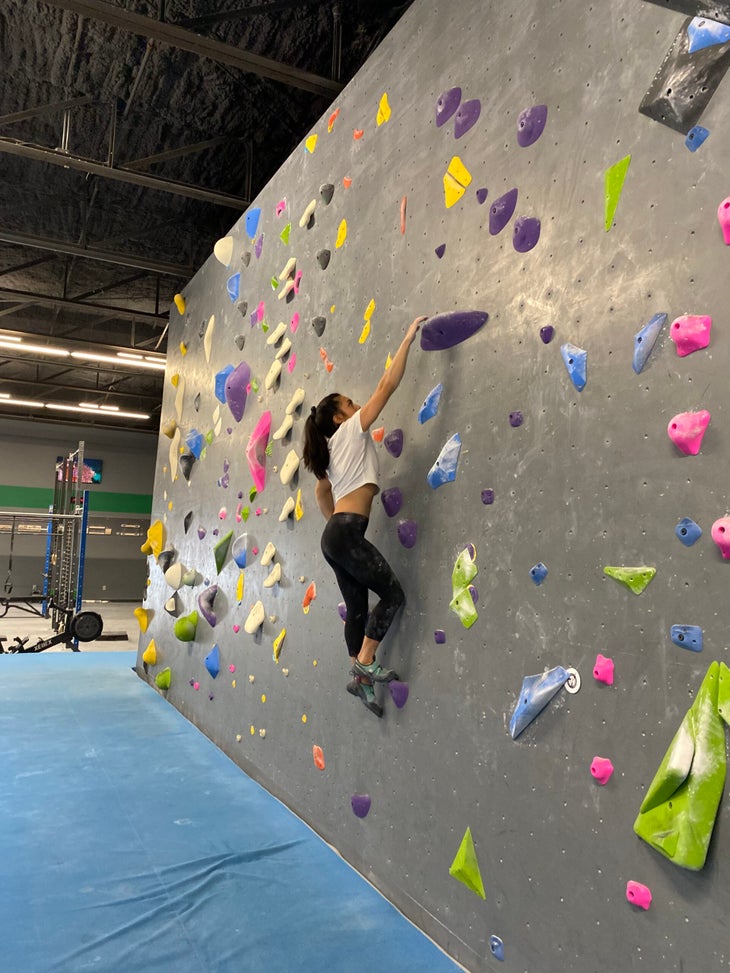 |
Practicing your hip skills while climbing
Next time you’re in the gym, add some intention to your warmup. Drills are best done on easier terrain so that you can focus on the movement. Practice both ends of the hip-shapes spectrum, being as exaggerated and dramatic as possible. Climb an easy climb with open hips only—frogged up and square to the wall—then perform the same climb with closed hips, doing backsteps and drop knees to suck your hips in. Compare and contrast your experience on the climb: which moves each of the shapes felt best on and which they felt awkward on.
You can also practice your deadpoint sequence, as described above, in a controlled setting at the gym. Practicing on easier terrain allows you to nail down the coordination of the movement. I recommend practicing on an easy, medium, and then difficult deadpoint.

Off-the-wall hip strengtheners
For strengthening the hips off-the-wall, the best-bang-for-your-buck exercise is going to be the squat. The squat is a functional movement that strengthens the hips, legs, and core while also increasing mobility. Squatting prepares you well to handle the different hip positions climbing throws at us. Below are some guidelines for performing squats. When adding weight, make sure to follow proper form and progress appropriately. If you’re unsure of how to properly perform the lift, seek professional guidance.
- Proper stance: Feet shoulder-width apart, toes turned out 30 degrees
- Weight in midfoot and back half of foot
- Neutral spine: No arching or rounding
- Chest stays up: Does not fall forward
- Knees track with toes
- Squat to a depth slightly below parallel—i.e., your quads should be just below parallel to the floor
Related: The Training Bible: A Complete One-Year Training Plan
Juliet Hammer (julietamanda.com) is a remote climbing coach based out of Chattanooga, Tennessee. She helps climbers of all levels reach their goals through technique and strength training.
The post Struggling With Powerful Moves? Don’t Just Train Your Fingers. appeared first on Climbing.

